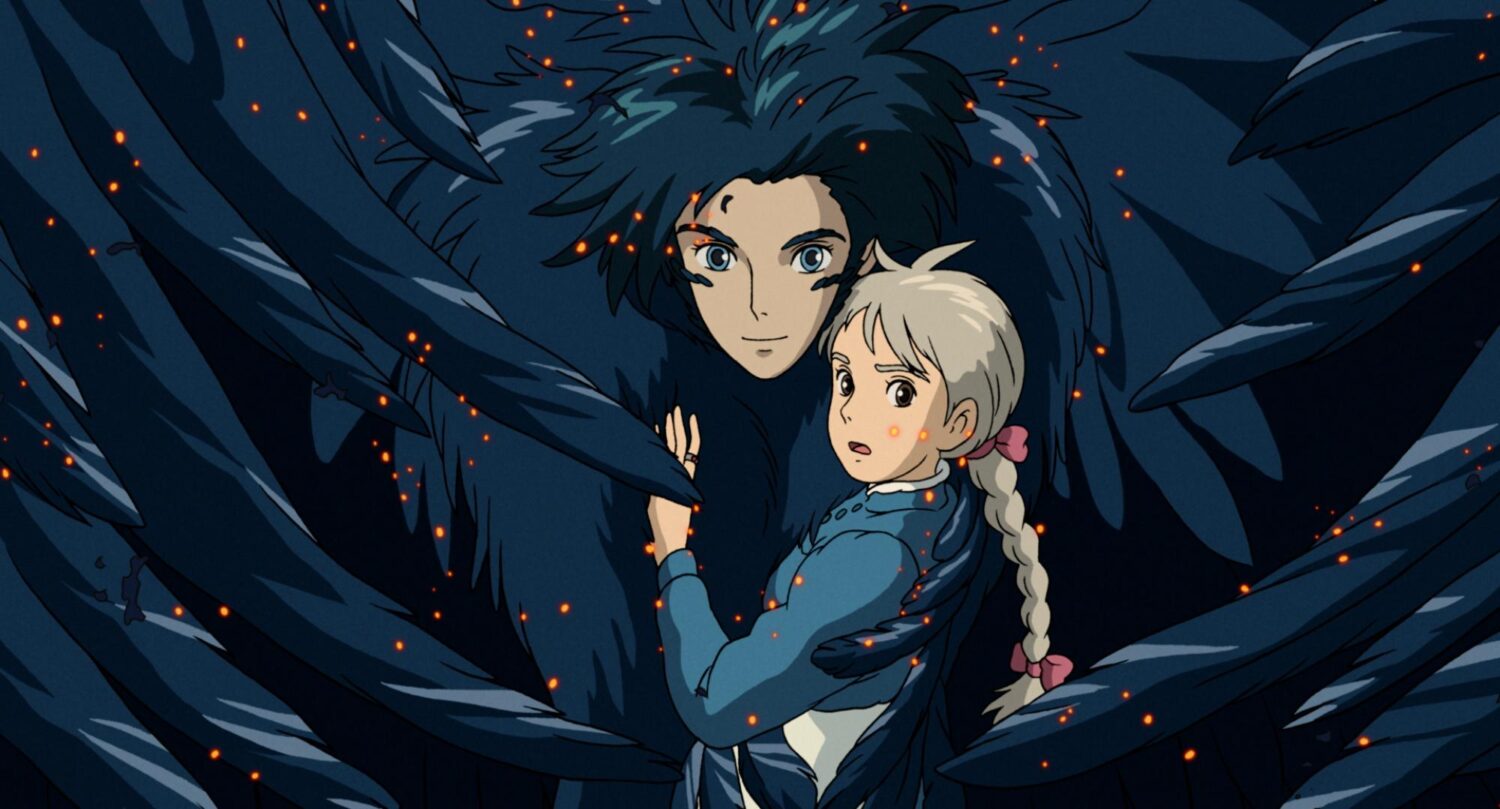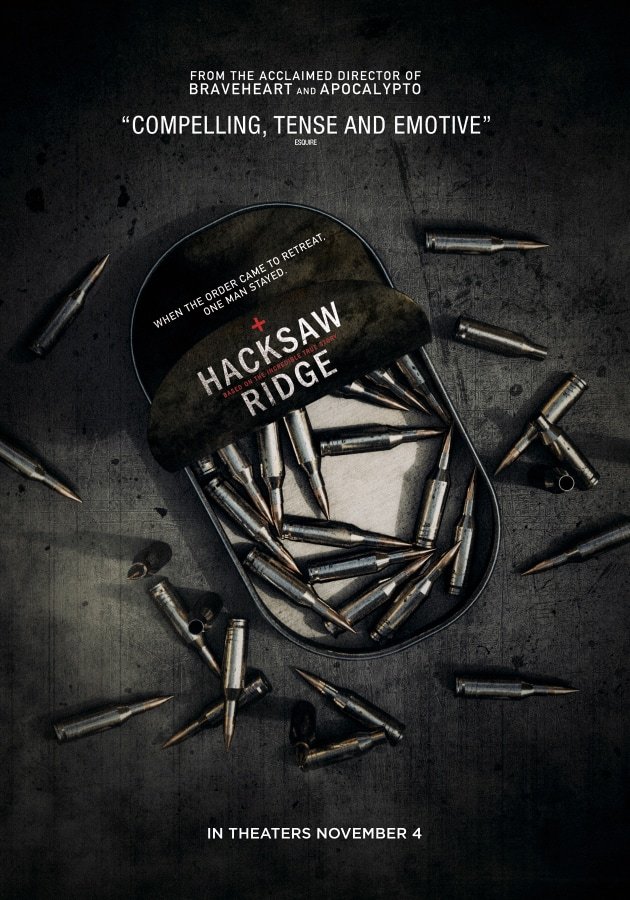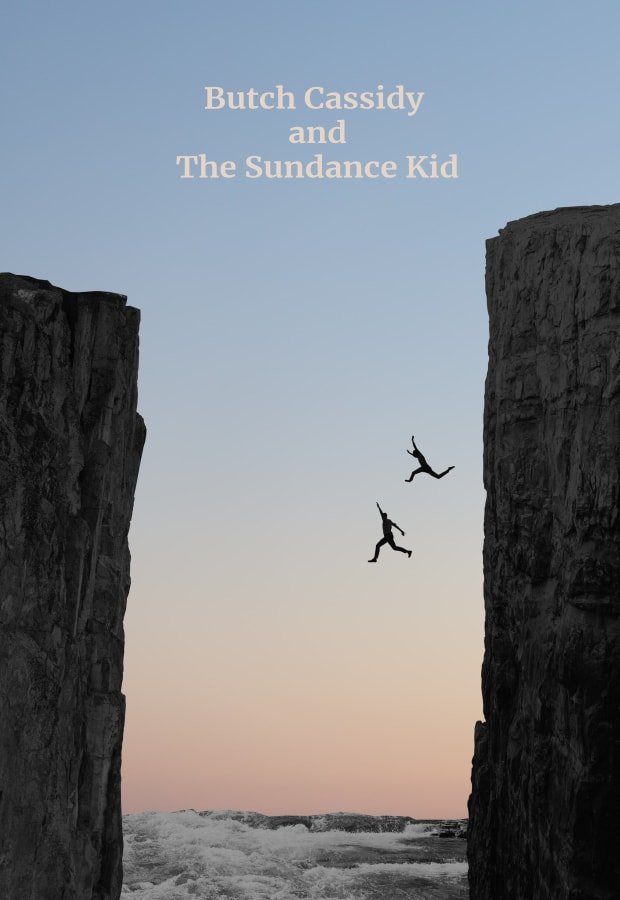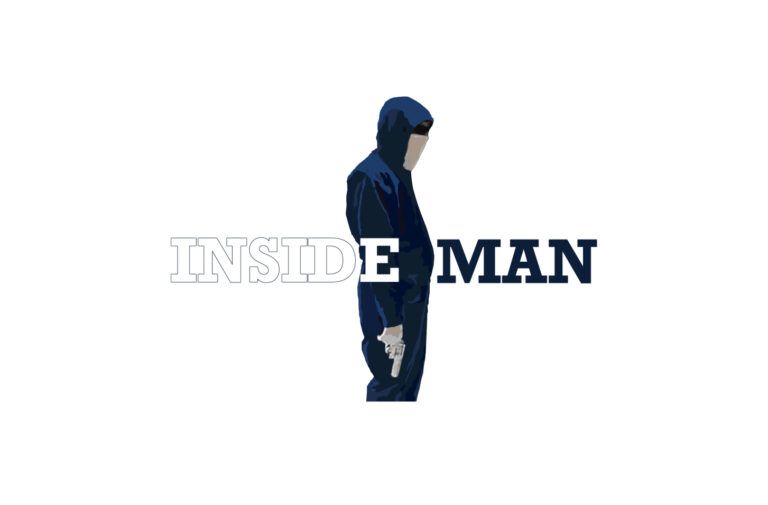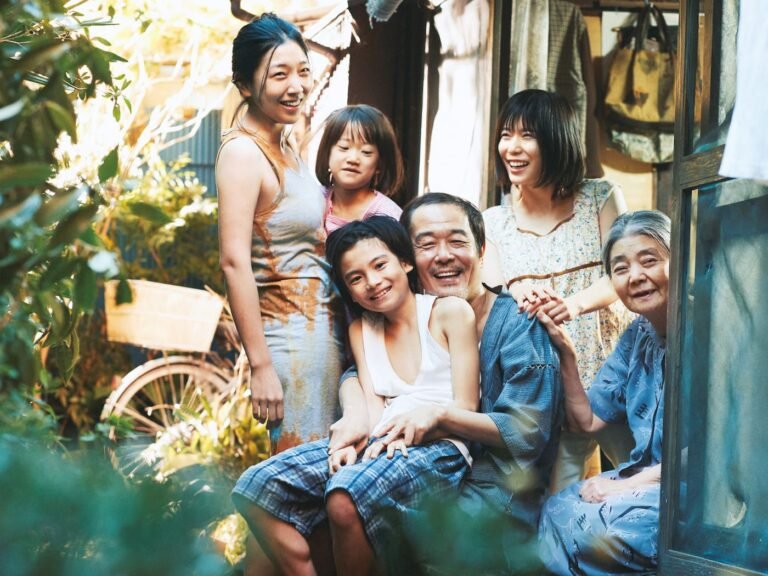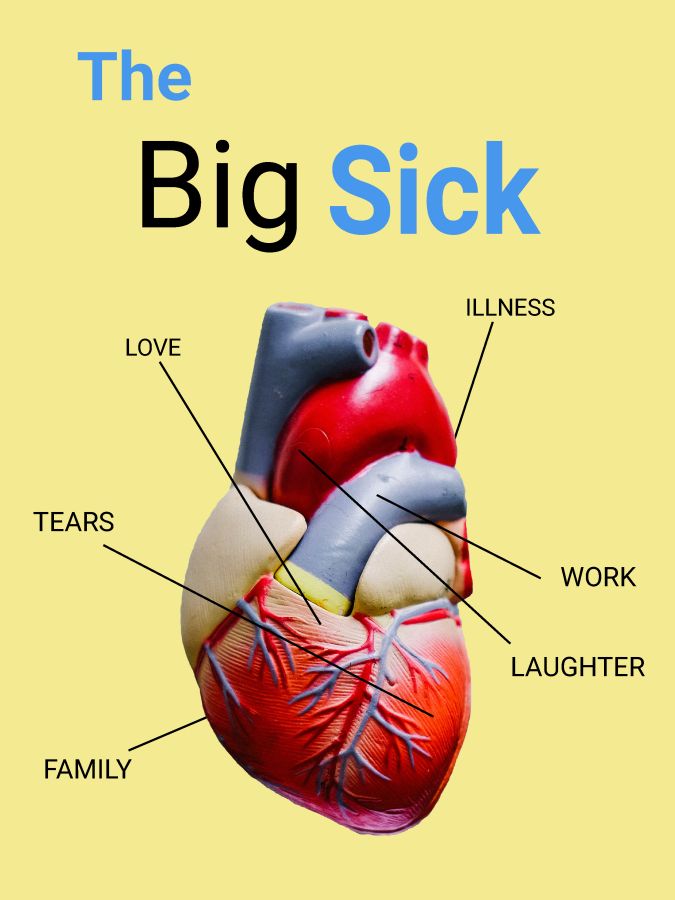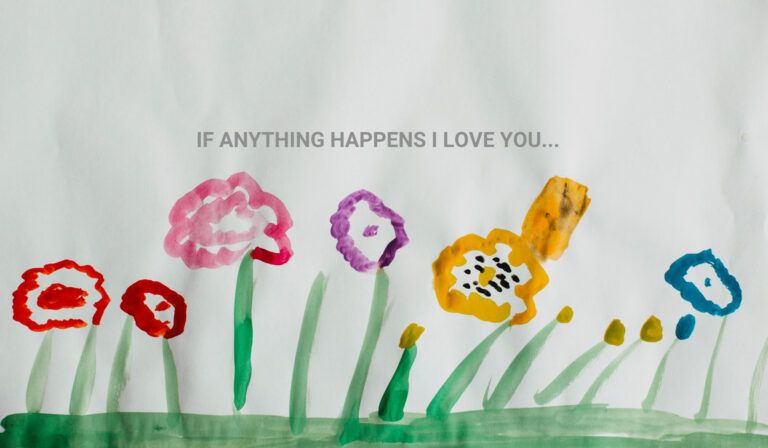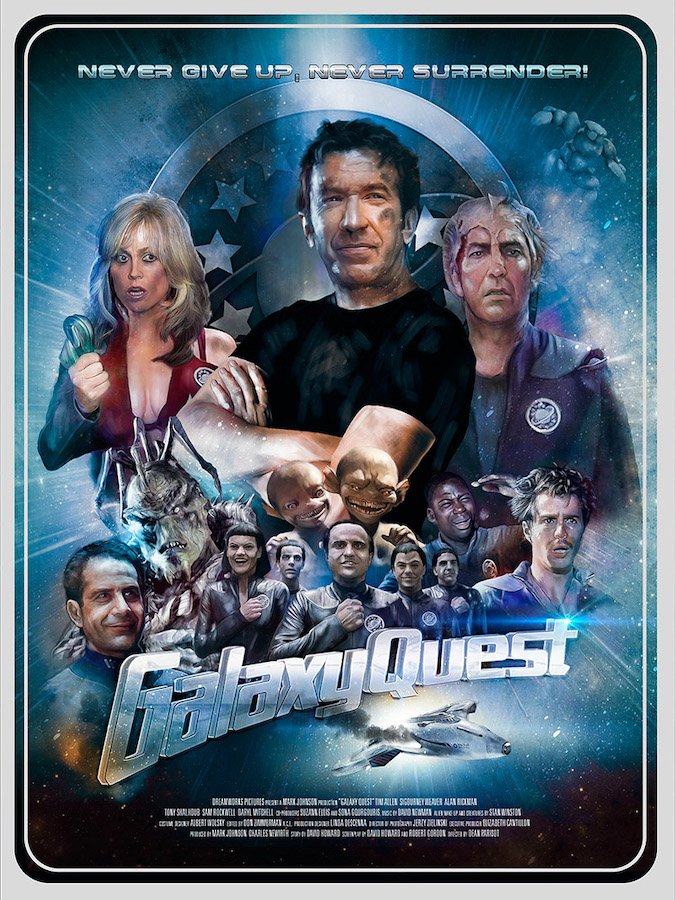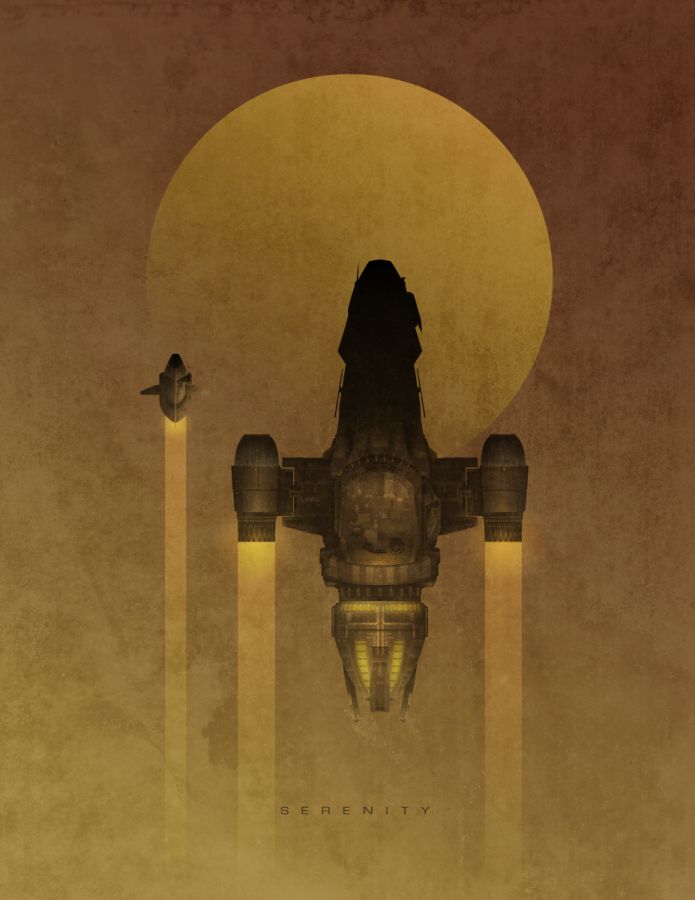Based on the novel of the same name by Dianne Wynne Jones, this children’s book has been adapted for all ages and added to in its magical qualities by the artistry of Studio Ghibli, and under the careful direction of Hayao Miyazaki.
The castle owned by Howl (Christian Bale) is a rambling house of steampunk-metal meets country-cottage, rusted pipes and claw feet. It’s a castle that literally moves and looks like a strange magical creature as it ponders its way through the serene countryside. Famously known to the land’s inhabitants as Howl’s Moving Castle, its owner and wizard Howl being just as famous, and maybe more so for the tales of him bewitching and stealing the hearts of pretty girls.
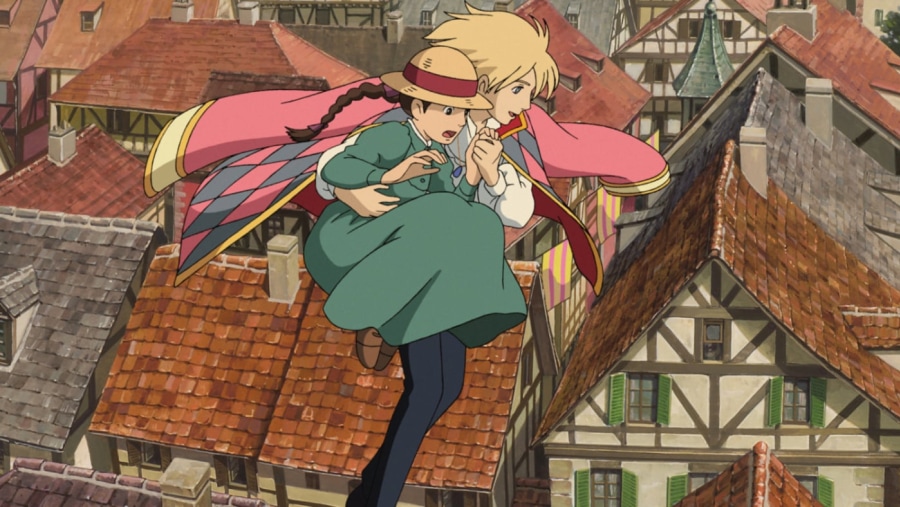 © 2004 Studio Ghibli – NDDMT
© 2004 Studio Ghibli – NDDMT
Contrasting against the magic and wonder, are the harsh lines of military planes and rigid soldiers on parade – an approach of war being hinted at, but with Howl’s Castle hiding from them, it’s made clear he wants no part of it, and neither does the unassuming young girl Sophie.
A hardworking shop girl and the film’s hero, Sophie (Emily Mortimer/Jean Simmons), avoids the crowds of cheering military fans, she’s shy, considers herself ugly and though she wouldn’t believe herself brave, in her first instance of needing to be, she shouts at two soldiers looking to harass her “LEAVE ME ALONE.” Hiding away from the world, Sophie initially denies her courage and herself, but as she gets swept into the life of Howl and his enemies, including the Witch of the Waste (Lauren Bacall), she begins to step more to the forefront and with it her personality shines – even to the surprise of herself.
In keeping with this personal transformation and providing a literal example; Sophie is cursed near the beginning of the film by the Witch of the Waste into an old lady, but by fate and a scarecrow she comes to work in Howl’s castle as a “cleaning lady”. And in another fitting turn, she cleans and fixes the lives of those living there. In being physically changed into an old lady, Sophie has the perfect disguise to finally be herself, feeling in part a shelter and protection from it, whilst ironically it also opens the world for her, and it’s Howl’s magical one at that.
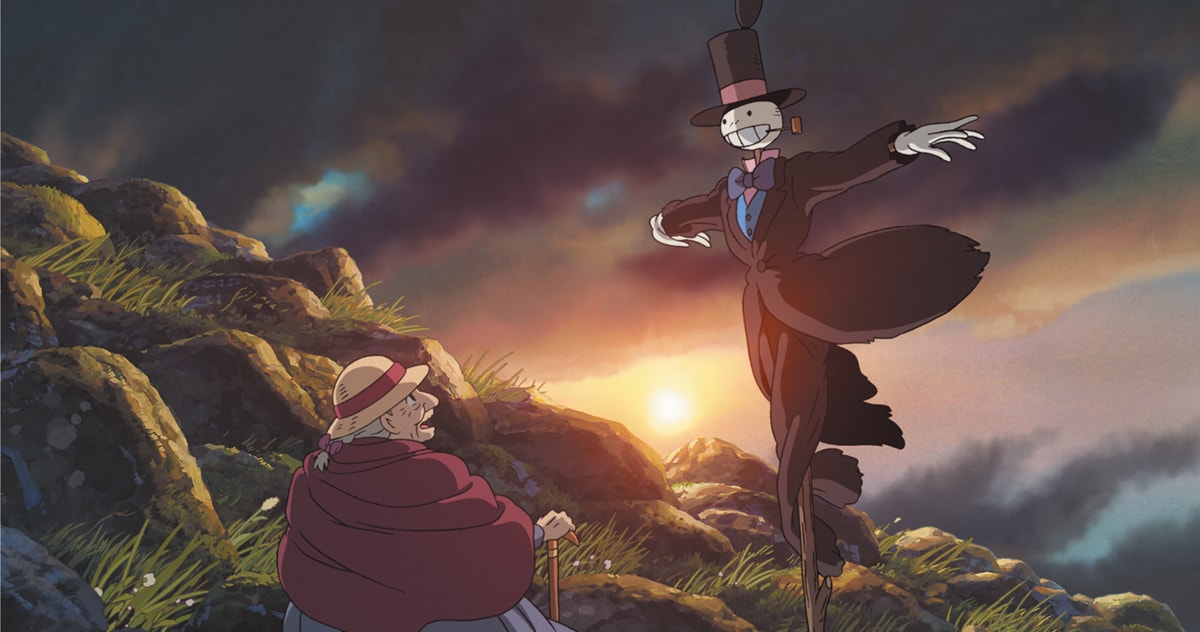 © 2004 Studio Ghibli – NDDMT
© 2004 Studio Ghibli – NDDMT
Cursed, Sophie cannot tell those she meets who she really is or once was, and so for all appearances she is an old lady – and is seemingly accepted as such by the castle’s occupants. Their arrangement being much like a family, with Sophie becoming a mum to them all, especially for the young wizard apprentice Markl (Josh Hutcherson), who still acts like the child he is. Then there’s the fire demon called Calcifer (Billy Crystal), who agrees to let Sophie stay as he feels her curse and hopes in turn she can solve his, and finally Howl, who is petulant, spoilt, vain, but also charming, and who over time and through Sophie’s help, shows parts of his personality long since hidden. There’s also a magical scarecrow who has taken a liking to Sophie. A cute dog that’s very unfit. A witch of slimy dispositions. Dark spirits. Royalty and more.
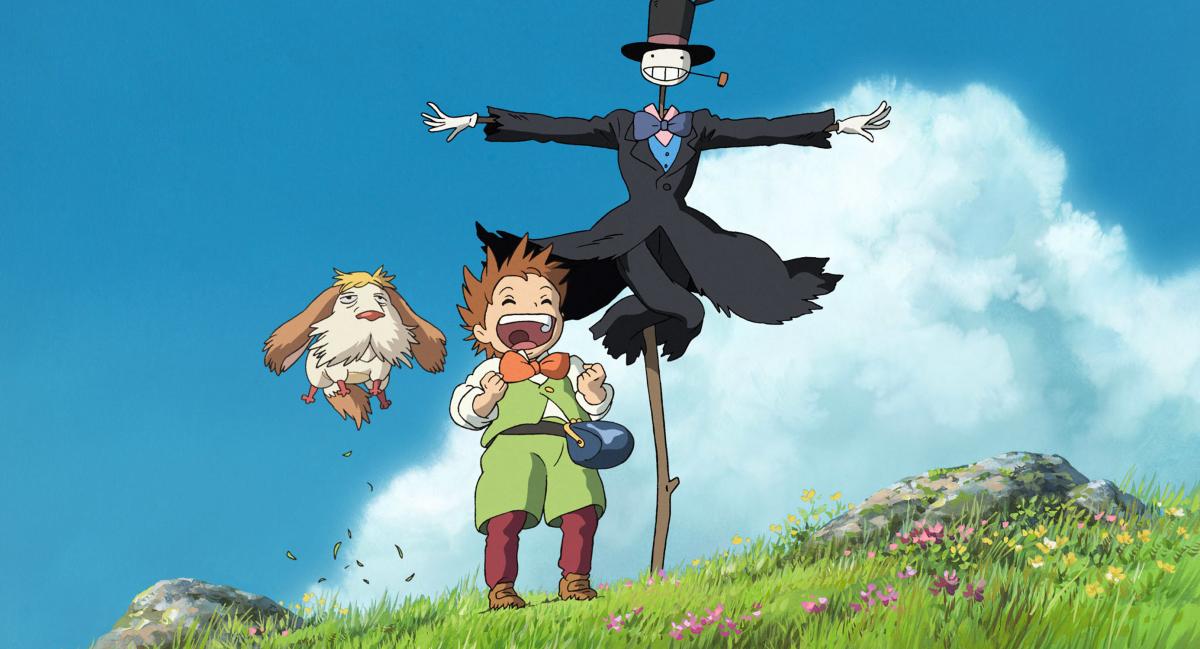 © 2004 Studio Ghibli – NDDMT
© 2004 Studio Ghibli – NDDMT
Magic fills every scene of the movie, and Sophie’s excitement is just like the audiences, her eager childlike curiosity satiating our own. You’d think Sophie would hate magic for the curse that’s been put upon her, but she doesn’t hold a grudge and loves to see its possibilities, in particular the secrets of the castle. Its front door opening onto different landscapes; the wastes, two opposing countries at war, to a place of darkness only Howl knows and enters into. Howl, meanwhile is the greatest mystery, his secrets; “You who swallowed a falling star, o’ heartless man…….” pulling Sophie into the risk of losing hers.
At times Sophie’s curse lifts for a second – her youth shown once again, but she’s unaware of it, and when she denies her beauty inside and out, she reverts back to the appearance of an older lady. The reason her youth shows now and then? Maybe it’s because she’s at last embracing herself – through moments of passion, and unguarded emotions. No longer the shy retiring girl, who was put further and further down by herself, but through the curse she gains a freedom she never knew existed.
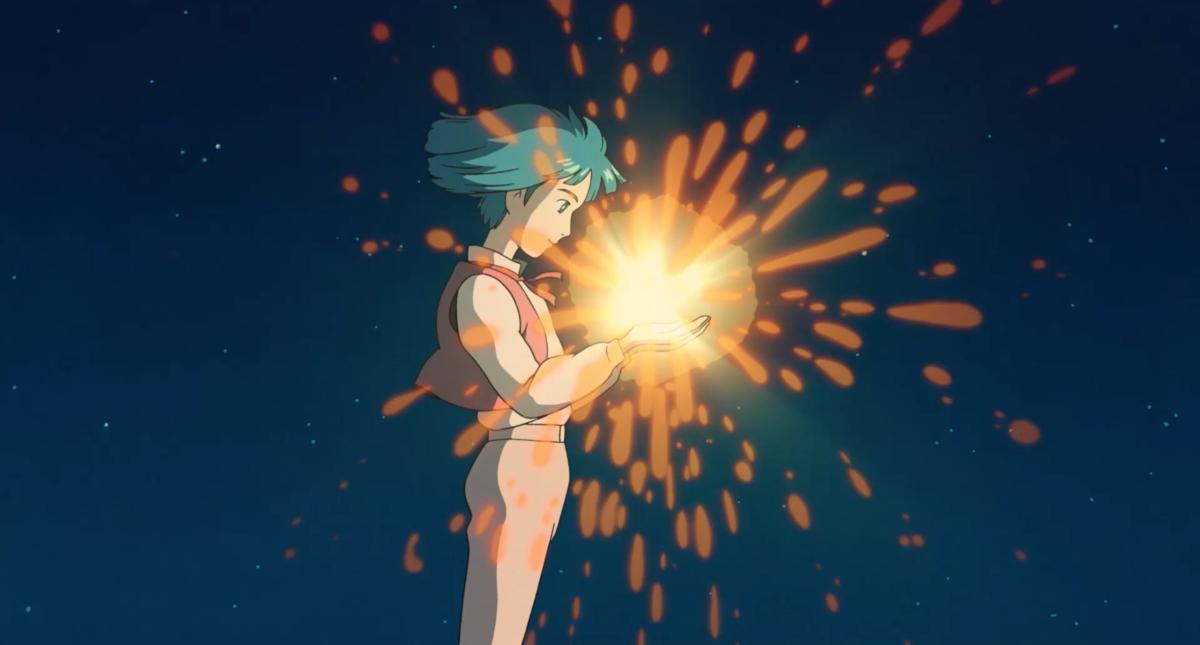 © 2004 Studio Ghibli – NDDMT
© 2004 Studio Ghibli – NDDMT
It’s hard to pick a favourite movie from Studio Ghibli’s collection, each one being a rare gemstone, but Howl’s Moving Castle is particularly eye-catching with its lavish attention to detail; the animation being as enchanting as its story, while its darker complexities are easy to follow, such as its portrayal of war. From its wide-ranging destruction to those caught inside – being treated only as meaningless numbers – while those higher up remain out of reach from the consequence of their decisions. The film reflecting on those in power as having a gung-ho nature when first entering war, and for unjustified reasons. Hayao Miyazaki was inspired in exploring this theme due to being frustrated with America in starting the Iraq War.
Against this backdrop of war, the film shows the impact one individual can make with their enduring courage and love. A film for all ages, Howl’s Moving Castle is an animation that’s truly magical.
Director & Writer: Hayao Miyazaki
Other notable works:
- The Wind Rises 2013
- From Up on Poppy Hill 2011
- Arrietty 2010
- Ponyo 2008
- The Cat Returns 2002
- Spirited Away 2001
- Princess Mononoke 1997
- Whisper of the Heart 1995
- Pom Poko 1994
- Porco Rosso 1992
- Only Yesterday 1991
- Kiki’s Delivery Service 1989
- My Neighbour Totoro 1988
- Laputa: Castle in the Sky 1986
- Nausicaä of the Valley of the Wind 1984
- The Castle of Cagliostro 1979
Based on the book Howl’s Moving Castle by Diana Wynne Jones

